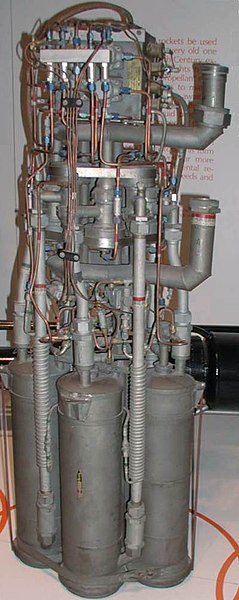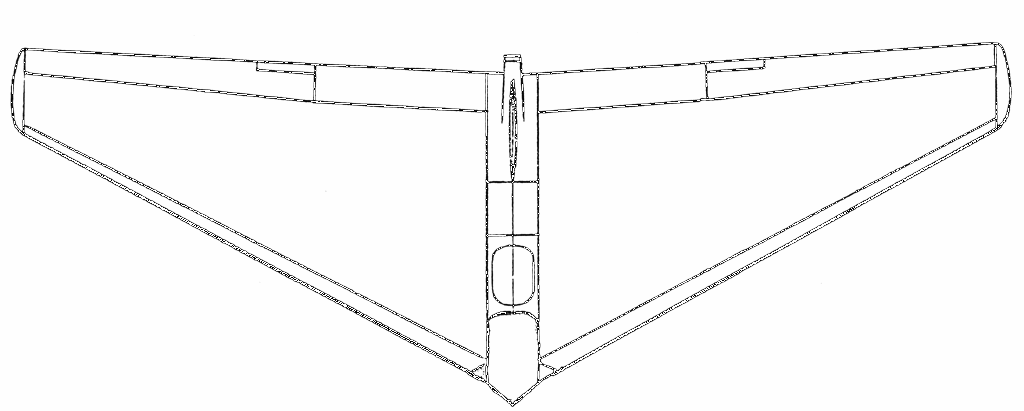I
n 1936, James Wyld developed the idea of letting rocket fuel circulate around the rocket nozzle using a double wall configuration as a means of producing more powerful rocket engines. He first reported this innovation in the April 1938 issue of the American Rocket Society Journal, Astronautics.
Wyld's "self-cooled tubular regenerative rocket motor," was first tested on December 10, 1938, at New Rochelle, New York. It produced 90 pounds of thrust for thirteen seconds, and its simple steel chamber and nozzle did not burn out. The static test was cut short because the ARS could not afford sufficient amounts of liquid oxygen, but the test was successful. Engines tested by the ARS were primarily intended for JATO (Jet Assisted Take Off) use by aircraft.
The ARS continued to improve on Wyld's original design, and by July 1941, three successful tests of his liquid fuel rocket motor were made, producing an average thrust of 125 pounds. These tests were repeated for the U.S. Navy in November 1941, winning Wyld and his associates a contract to build more rocket engines. On December 16, 1941, Wyld and four other ARS members formed Reaction Motors, Inc. (RMI), the first commercial rocket company in the United States to continue development of his engine design. James H. Wyld was the company's secretary and director of research.
During World War II, Wyld's rocket work was integrated into the American military effort. After meeting its initial Navy contract for a JATO engine with 1,000 pounds of force in 1942, RMI continued to improve on his design, and by 1943, Wyld and his co-workers delivered a JATO engine to the Navy that could produce 3,400 pounds of thrust.
In 1945 RMI got a contract for a powerful engine to power what would become the the Bell X-1 by combing four thrust chambers of Wyld's motor to produce 6000 pounds of thrust on LOX and alcohol
PoD, American Rocket Society gets a lot of money from a benefactor, and can spend more on testing, getting the Navy's attention sooner. Liquid fueld JATOs sooner
Northrop hears of RMI's motors, and uses that for his XP-79A vs OTLs RFNA fueled Aerojet motor, and both Army and Navy get interested in high speed rocket powered aircraft.
RMI gets a contract to do the XLR11 engine a few years early, and the *P-79C flirts with the sound barrier



